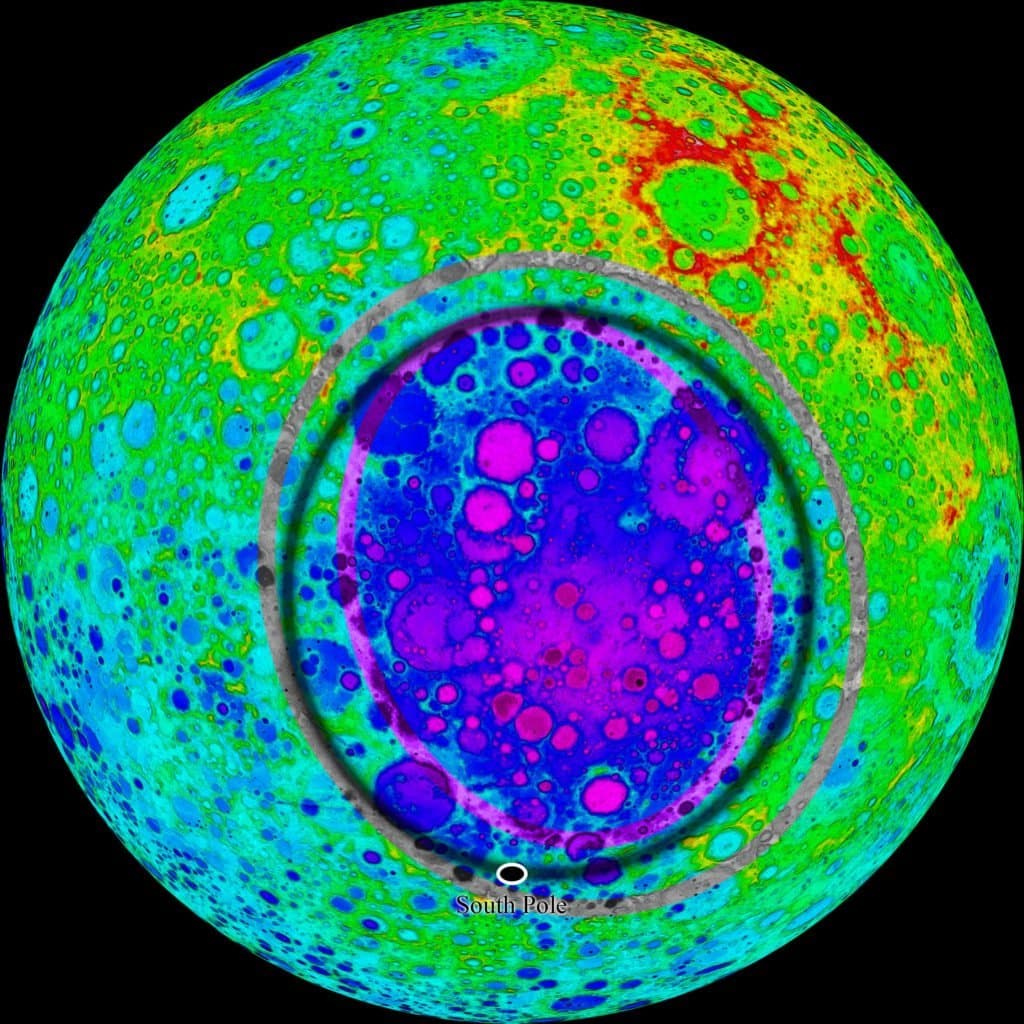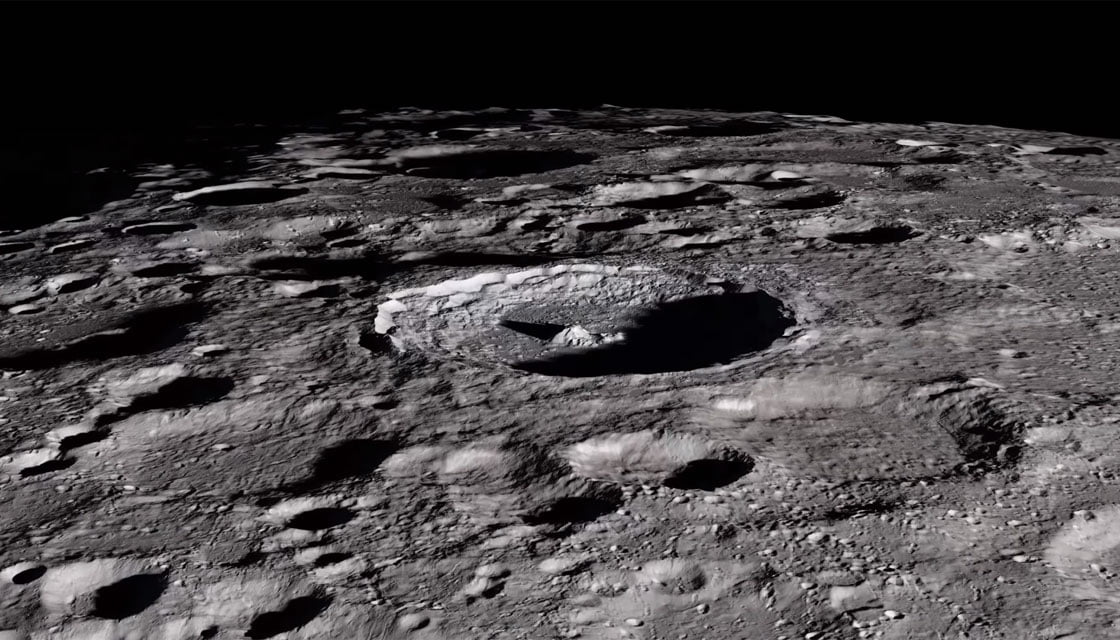Researchers studying the lunar surface have come across an unexpected discovery: from data on lunar topography it emerges that there is a gravitational "anomaly" precisely in correspondence with a large crater in the South Pole region, which appears to contain a large deposit of material dense, presumably the remains of an ancient metallic asteroid.

The area, known as South-Aitken basin, is one of the largest known impact craters: it has a diameter of 2500 kilometers. There have been even larger impacts (including some on Earth), but the thin lunar atmosphere preserves these traces much better and for longer: this is why that area has always been the subject of research. Recently the Chinese lander Chang'e visited the area, stationed in a small crater called Von Karmán.
A team from Baylor University in Texas used data from the Gravity Recovery and Interior Laboratory (GRAIL) missions of 2011 and 2012, and from the Lunar Reconnaissance Orbiter (LRO), which monitored the area for 10 years, to formulate new hypotheses on the origin of the crater. Taken together they present an oddity: in the crater area the gravity should decrease slightly, but in reality it increases.
The most plausible explanation is that the object responsible for the impact is still there, almost intact beneath the surface. 4 billion years ago a largely metallic asteroid hit our satellite and remained buried there.


